Successful metal fusion requires understanding melting points (gold: 1,064°C, silver: 961.8°C) and metal compatibility. Always work in a well-ventilated space with a clean soldering block and protective gear. Use a precision torch, quality flux, and clean your metals thoroughly before applying heat. Heat gradually until the surface becomes shiny, then cool quickly. Practice with different metals to build confidence. The perfect fusion awaits as you master these essential techniques.
Understanding Metal Melting Points and Compatibility
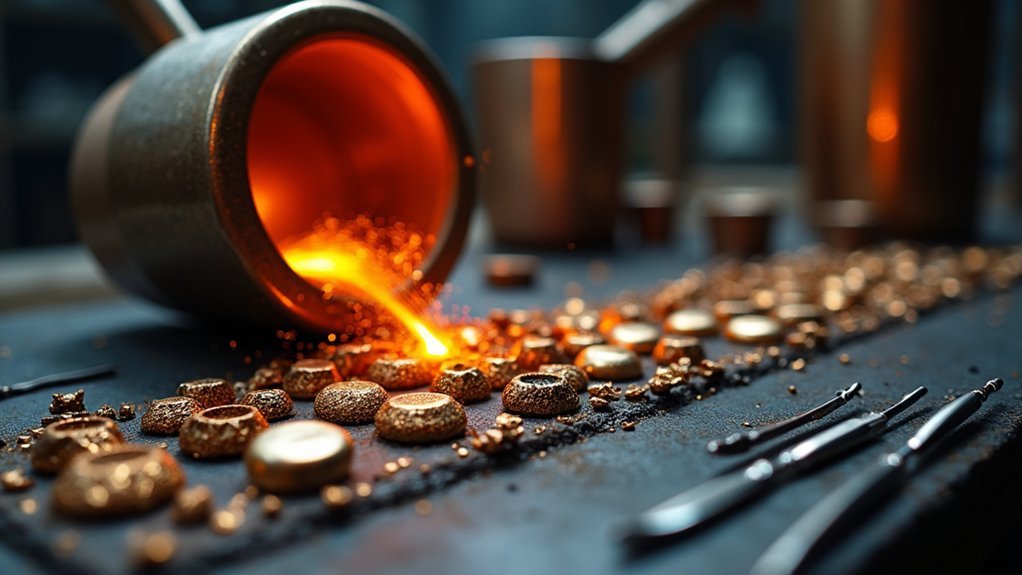
When starting on metal fusion projects for jewelry, you’ll need to grasp the fundamental properties of different metals and how they interact. Each metal has a unique melting point—gold reaches its liquid state at 1,064°C, while silver melts at 961.8°C. This difference is essential when planning your fusion technique.
Always work with compatible metals for successful joins. Similar alloys fuse more predictably, while mixing dissimilar metals can lead to weak connections or unexpected reactions. When heating, aim for a temperature just below the melting point of the lower-temperature metal to maintain structural integrity.
Remember that thermal conductivity affects heat distribution during fusion. High-conductivity metals like copper transfer heat differently than metals like titanium.
Always apply flux to clean surfaces before fusing to prevent contaminants from weakening your jewelry pieces.
Preparing Your Workspace for Optimal Fusion Results
Three essential elements contribute to successful metal fusion in jewelry: proper ventilation, organization, and safety. Your workspace must be well-ventilated to prevent inhalation of toxic gases released when heating metals. Open windows or use a ventilation system to guarantee harmful fumes dissipate quickly.
Organize your tools and materials methodically on a clean soldering block. Keep your flux, torch, and other necessities within easy reach to maintain workflow efficiency. A dedicated, distraction-free area allows you to focus on the precise heating required for perfect fusion.
Don’t overlook safety equipment—goggles and heat-resistant gloves are non-negotiable when working with high temperatures.
Finally, make certain your workspace remains clean and clutter-free, as contaminants can prevent proper metal adhesion and compromise your finished piece.
Essential Tools and Equipment for Metal Fusion
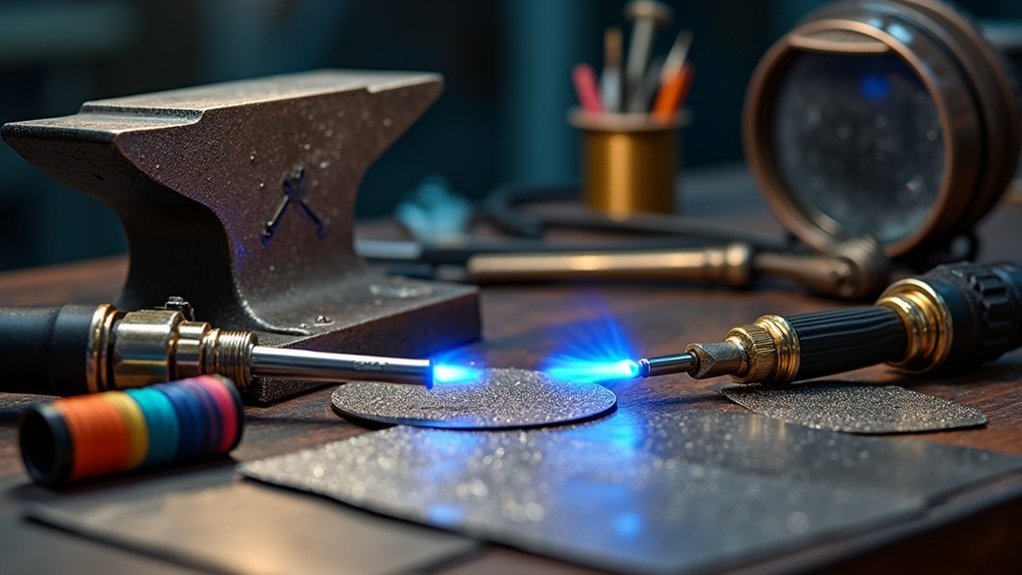
Now that your workspace is properly set up, you’ll need the right tools to bring your metal fusion projects to life.
Working with precious metals requires precision equipment that enables controlled heating and proper safety measures.
Precision tools and proper safety protocols create the foundation for successful metal fusion artistry.
- A precision torch with a small flame is your primary tool, allowing you to direct heat exactly where needed without melting the entire piece.
- A clean soldering block provides the perfect surface for your fusion work, preventing contamination that could compromise your design.
- High-quality flux is essential for cleaning metal surfaces and preventing oxidation during the heating process.
- Safety equipment, including protective goggles and heat-resistant gloves, shields you from intense heat and potential splatter.
Step-by-Step Fusion Techniques for Beginners
Mastering metal fusion requires patience and practice, but follows a logical sequence that any beginner can learn.
Start by thoroughly cleaning your metal jewelry pieces and applying flux to the joining areas—cleanliness is essential for successful fusion.
Heat the metal gradually with a small, controlled flame until you notice the surface becoming shiny and fluid at its flash point.
One of the techniques used by professionals is maintaining a steady hand while focusing the flame precisely on your target area. This creates the controlled melting effect needed for artistic texture.
Remove the heat quickly to allow instant cooling, which creates distinctive ridges as the metal contracts.
Experiment with different metals and thicknesses to build your confidence and develop an understanding of how various materials respond to fusion.
Troubleshooting Common Metal Fusion Challenges
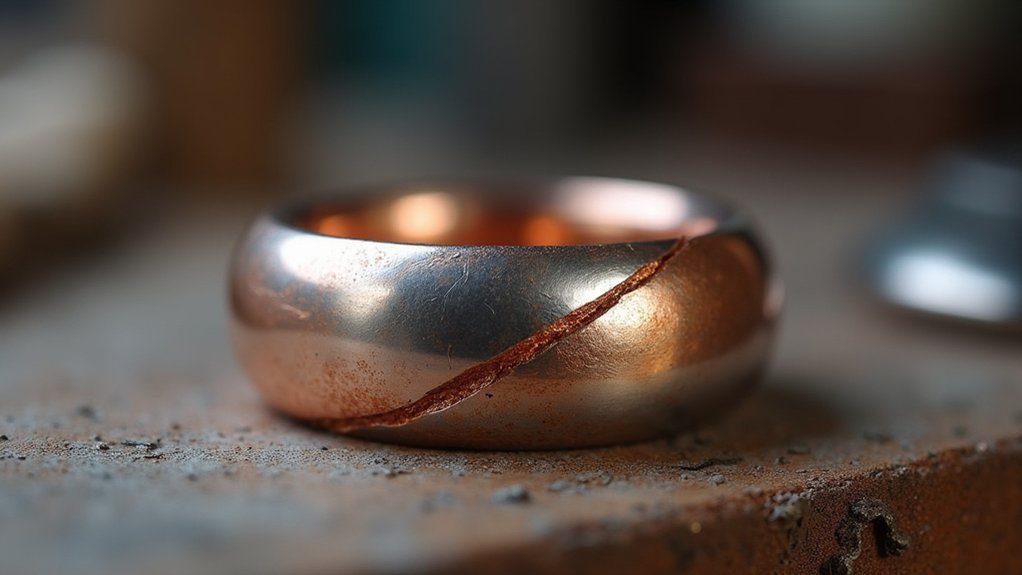
Even with proper technique, you’ll inevitably face obstacles as you practice metal fusion for jewelry. Unlike traditional soldering, fusion requires precise heat control and immaculate metal surfaces. When problems arise, carefully analyze what went wrong instead of repeating the same mistakes.
- Failed Joints: Check for contaminants or oxidation—clean surfaces thoroughly before attempting fusion again.
- Excessive Melting: You’re likely overheating; maintain more localized torch control and watch for the metal’s flash point.
- Poor Flow: Apply appropriate flux to protect the metal during heating, preventing oxidation that inhibits fusion.
- Inconsistent Results: Practice on scrap pieces first, paying close attention to your heating technique and the metal’s appearance when it becomes shiny and ready to fuse.
Creating Textured Effects Through Controlled Fusion
You’ll need precise heat control to achieve stunning fusion textures, maintaining your torch at the metal’s flash point without fully melting the piece.
Try building complexity through progressive layering of fused areas, allowing each section to cool before adding adjacent texture effects.
Mastering reticulation surfaces comes with practice—experiment with instant chilling techniques and varying metal thicknesses to create those distinctive ridges and valleys that make your jewelry unique.
Heat Control Fundamentals
While many jewelry techniques demand precision and uniformity, creating textured effects through metal fusion relies on your ability to deliberately control heat with artistic intention.
Mastering heat control fundamentals transforms ordinary metals into pieces with unique character and visual depth.
- Use a torch with a small flame to localize heat precisely, guaranteeing your metal reaches its flash point without overheating the entire piece.
- Watch for the moment your metal becomes shiny and fluid—this indicates the outer layer is melting while the core remains solid.
- Remove your flame and allow instant cooling to create the characteristic ridges and textures through contraction.
- Keep your metal and soldering block clean, as contaminants can sabotage your fusion process.
Understanding your material’s melting point and practicing proper flame control prevents accidental shapes and guarantees your design vision manifests in your fused jewelry.
Layering Texture Effects
Metal fusion techniques truly shine when you begin layering different elements to create complex, multi-dimensional textures. In jewelry making, try combining varying metal thicknesses to achieve depth—thicker pieces respond differently to heat than thinner ones, creating natural variations across your design.
For richer texture effects, incorporate metal filings or granules during the fusion process. These small additions melt partially into the base metal, forming distinctive raised patterns that catch light beautifully.
You’ll find that precise flame control is essential; too much heat destroys delicate details while insufficient heat prevents proper bonding.
Experiment with alternating wire and sheet metal combinations. The contrast between these forms creates striking visual interest, with wires creating linear patterns against broader surfaces.
Each technique builds upon the others, resulting in uniquely artistic pieces with character and dimension.
Mastering Reticulation Surfaces
Reticulation stands as one of the most dramatic texture techniques in metalsmithing, creating rippled, organic surfaces that catch light in fascinating ways.
When making custom reticulated surfaces, you’ll need to control the torch flame precisely, heating the metal until it reaches its flash point. This causes the outer layer to melt while maintaining the interior’s solidity.
- Clean your metal thoroughly before beginning—contaminants lead to uneven textures
- Remove the flame quickly after heating for immediate cooling, enhancing ridge formation
- Try different metal thicknesses to discover unique textural effects
- Monitor temperature carefully to avoid over-melting your piece
Success requires patience and practice, but you’ll soon create distinctive jewelry pieces with surfaces that tell a story through their undulating, organic textures.
Safety Protocols for Working With High-Temperature Techniques
Before diving into the creative aspects of metal fusion, you’ll need to establish rigorous safety protocols for high-temperature work.
Always wear proper PPE, including safety goggles to protect your eyes and heat-resistant gloves to prevent burns when handling hot materials.
Ensure your workspace is well-ventilated to avoid inhaling toxic fumes released when metals are heated.
Keep a designated fire extinguisher for metal fires within arm’s reach for emergency situations.
Maintain an organized workspace free of clutter and store flammable materials away from your heating area.
Familiarize yourself with the melting points of your metals to prevent dangerous overheating scenarios.
These precautions aren’t just recommendations—they’re essential practices that will keep you safe while you explore the artistic possibilities of metal fusion.
Frequently Asked Questions
How to Fuse Metal for Jewelry?
To fuse metal for jewelry, you’ll clean the surfaces, apply flux, use a small flame torch to heat until shiny but not melted, then remove heat for rapid cooling, creating unique textural bonds.
How to Properly Mix Metal Jewelry?
To properly mix metal jewelry, consider your skin tone, distribute metals evenly across pieces, use jewelry with mixed metals, match tone consistency, and experiment with layering different thicknesses and textures for visual interest.
What Metals Should I Avoid in Jewelry?
You’ll want to avoid metals with high lead or cadmium content, tungsten, tantalum, cast iron, and incompatible metal combinations like aluminum with copper. These can be toxic, difficult to work with, or create weak bonds.
What Is the Rarest Metal for Jewelry?
Rhodium is the rarest metal you’ll find in jewelry, primarily sourced from South Africa. Platinum follows closely behind. Both are highly valued for their reflective properties, durability, and resistance to tarnishing.
In Summary
Metal fusion opens a world of creative possibilities in your jewelry making. By understanding melting points, preparing your workspace, and using the right tools, you’ll master this technique quickly. Don’t be discouraged by initial challenges—they’re part of your learning journey. Remember that safety comes first when you’re working with high temperatures. With practice, you’ll soon create stunning textured pieces that showcase your unique artistic vision.

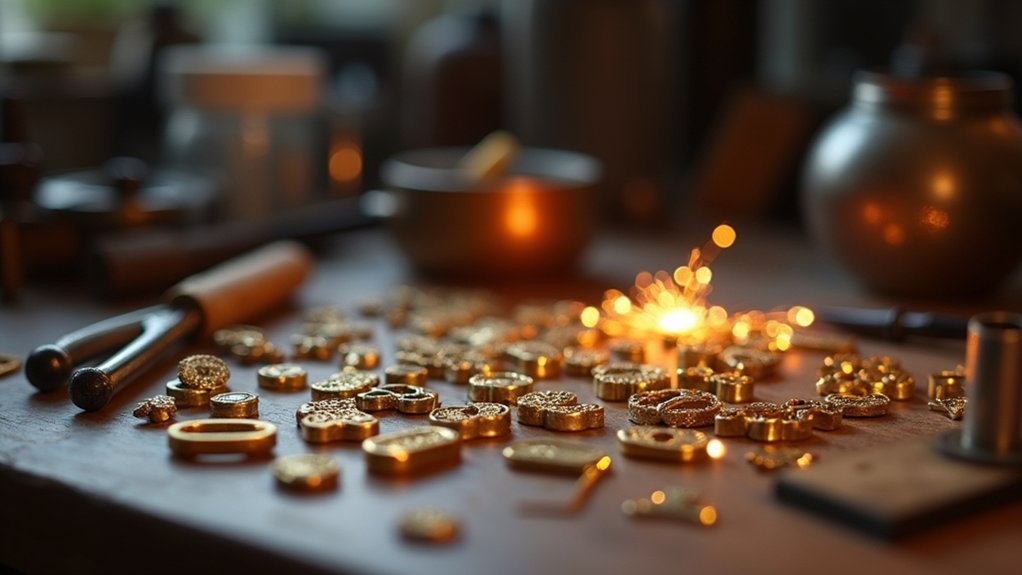
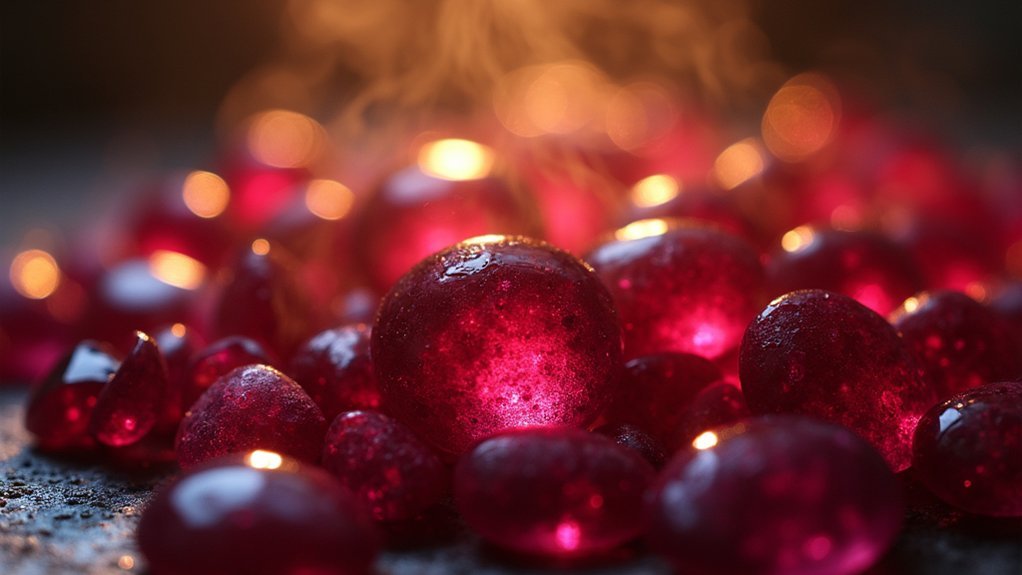
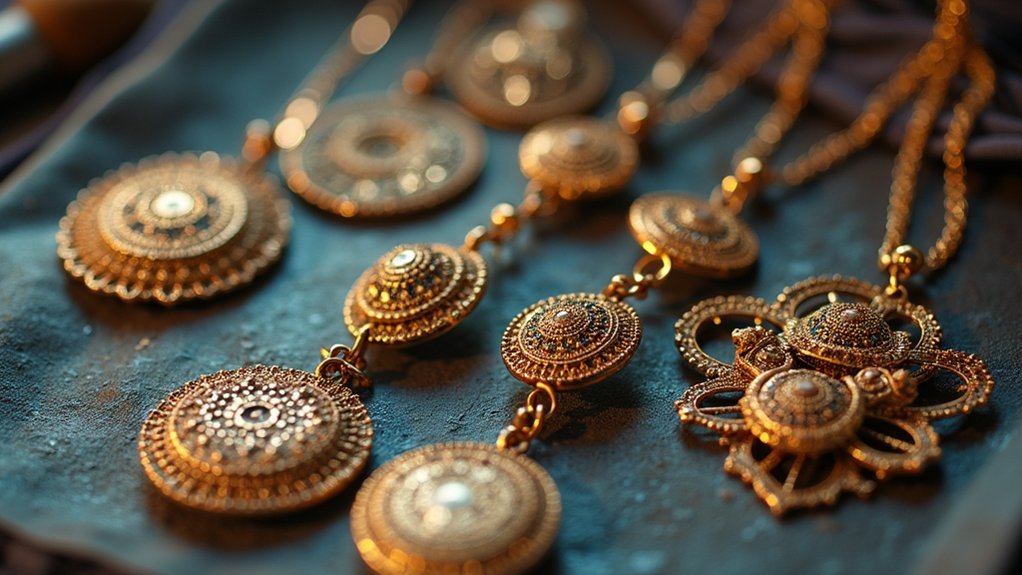
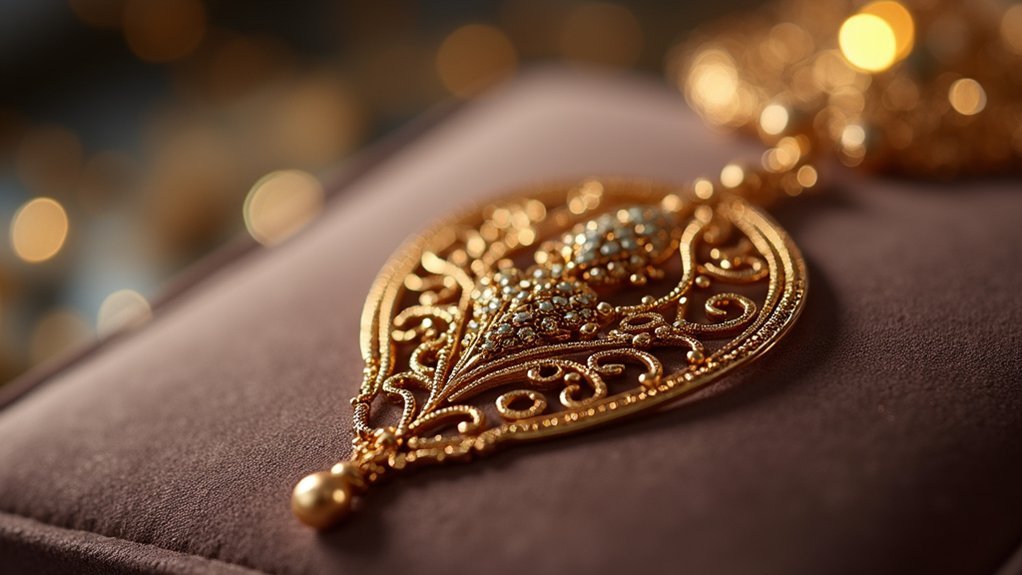
Leave a Reply